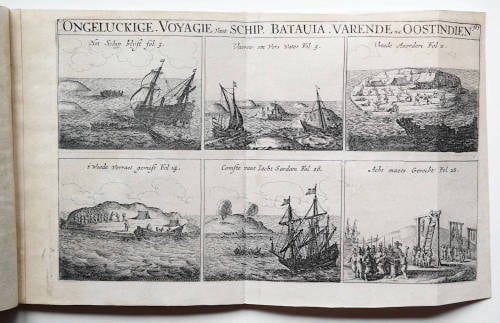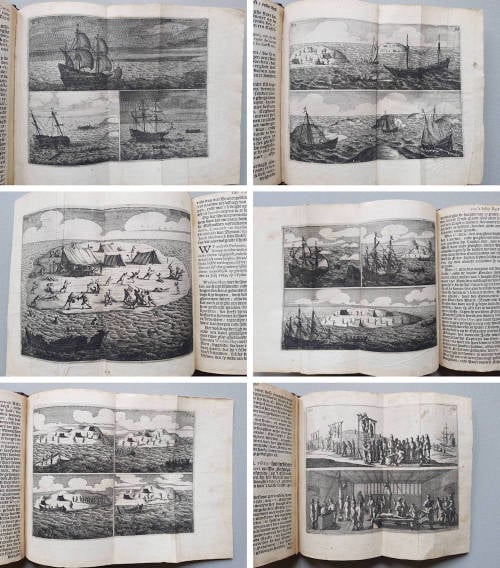Leen Helmink Antique Maps
Old books, maps and prints by Francisco Pelsaert
Francisco Pelsaert (1591-1630)
Francisco Pelsaert (1591?-1630), officer of the Dutch East India Co., was born at Antwerp, Belgium, probably the son of Eberhard Pelzer. He was brother-in-law of Admiral Hendrick Brouwer. In 1618 he sailed for the east in the company's commercial service and two years later was posted to India as junior merchant. After travelling overland from Masulipatam to Surat, he was sent to Agra where he stayed for seven years, meanwhile becoming senior merchant. In 1626 he wrote an account of the Mogul Empire, which was translated from the Dutch by W. H. Moreland and P. Geyl, and published as Jahangir's India. The Remonstrantie of Francisco Pelsaert (Cambridge, 1925).
After a stay in Holland from June to October 1628, he left for Java in charge of three ships, but his own ship Batavia lost contact with the other two in the Atlantic. It was a difficult voyage with quarrelsome members among the crew, and there appeared some danger of mutiny before disaster struck: on 4 June 1629 the Batavia was wrecked at 28°40' S. on a coral reef of the Houtman Abrolhos, about 45 miles (72 km) off the present town of Geraldton. Leaving most of the crew and the passengers on two islets, Pelsaert set off on 8 June in the ship's boat with thirty men to look for fresh water in the neighbourhood. When this search proved unsuccessful he undertook the journey to Batavia. For eight days he followed the coast northwards as far as 22°17' S, whence he made for the north-west, reaching the south coast of Java on 27 June and Batavia on 5 July. Ten days later Pelsaert left again in the small Saerdam, sailed to 30°16' S. and reached the Australian west coast to the south of the Houtman Abrolhos on 3 September. It took another fortnight for the Saerdam to arrive at the Abrolhos. Meanwhile some of the survivors had mutinied and massacred 125 men and women. Pelsaert restored law and order and had the ringleaders of the mutiny tried. Seven were hanged on 2 October and two men were marooned on the mainland. After salvaging part of the Batavia's cargo Pelsaert returned to Batavia where he arrived on 5 December. Here the Court of Justice sentenced six more mutineers to death.
Pelsaert's health had suffered from the hardships, but nevertheless he took part in an expedition to Sumatra. Soon after his return to Batavia he died in September 1630. He does not seem to have taken his seat in the High Government at Batavia for which he had been selected as extraordinary member in 1629.
Select Bibliography
J. E. Heeres, The Part Borne by the Dutch in the Discovery of Australia 1606-1765 (Lond, 1899)
Biographie Nationale … de Belgique, vol 16 (Brussels, 1901)
F. W. Stapel, De Oostindische Compagnie en Australië (Amsterdam, 1937)
A. Sharp, The Discovery of Australia (Oxford, 1963)
H. Drake-Brockman, Voyage to Disaster: The Life of Francisco Pelsaert (Syd, 1963).
(Australian Dictionary of Biography)


